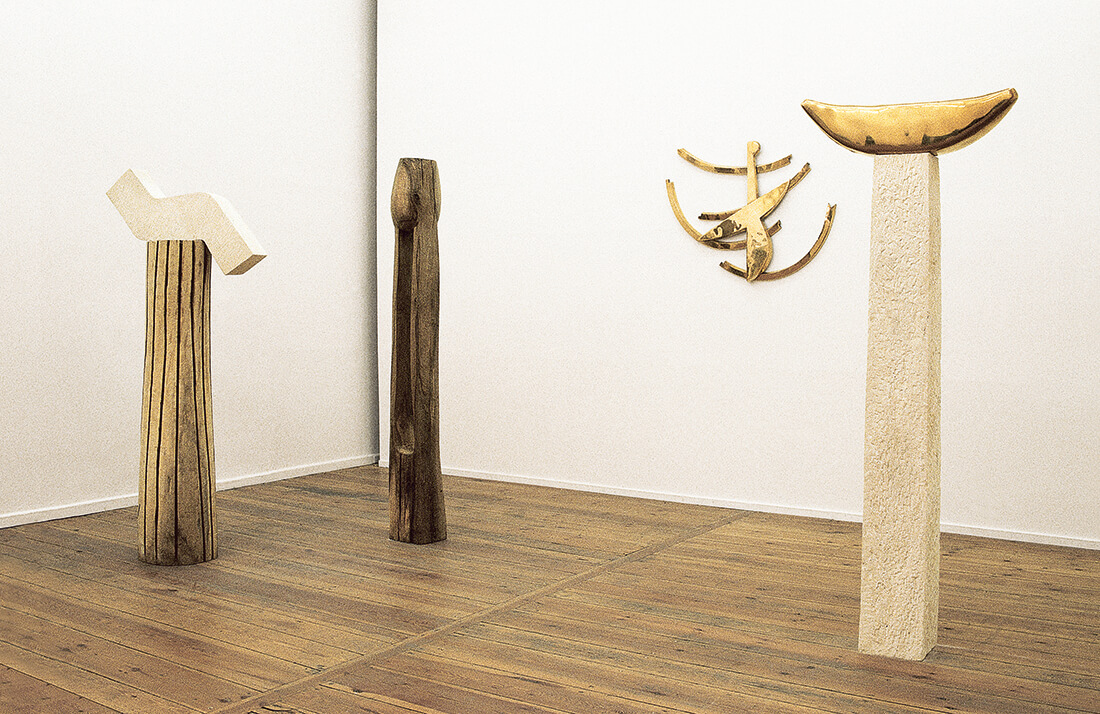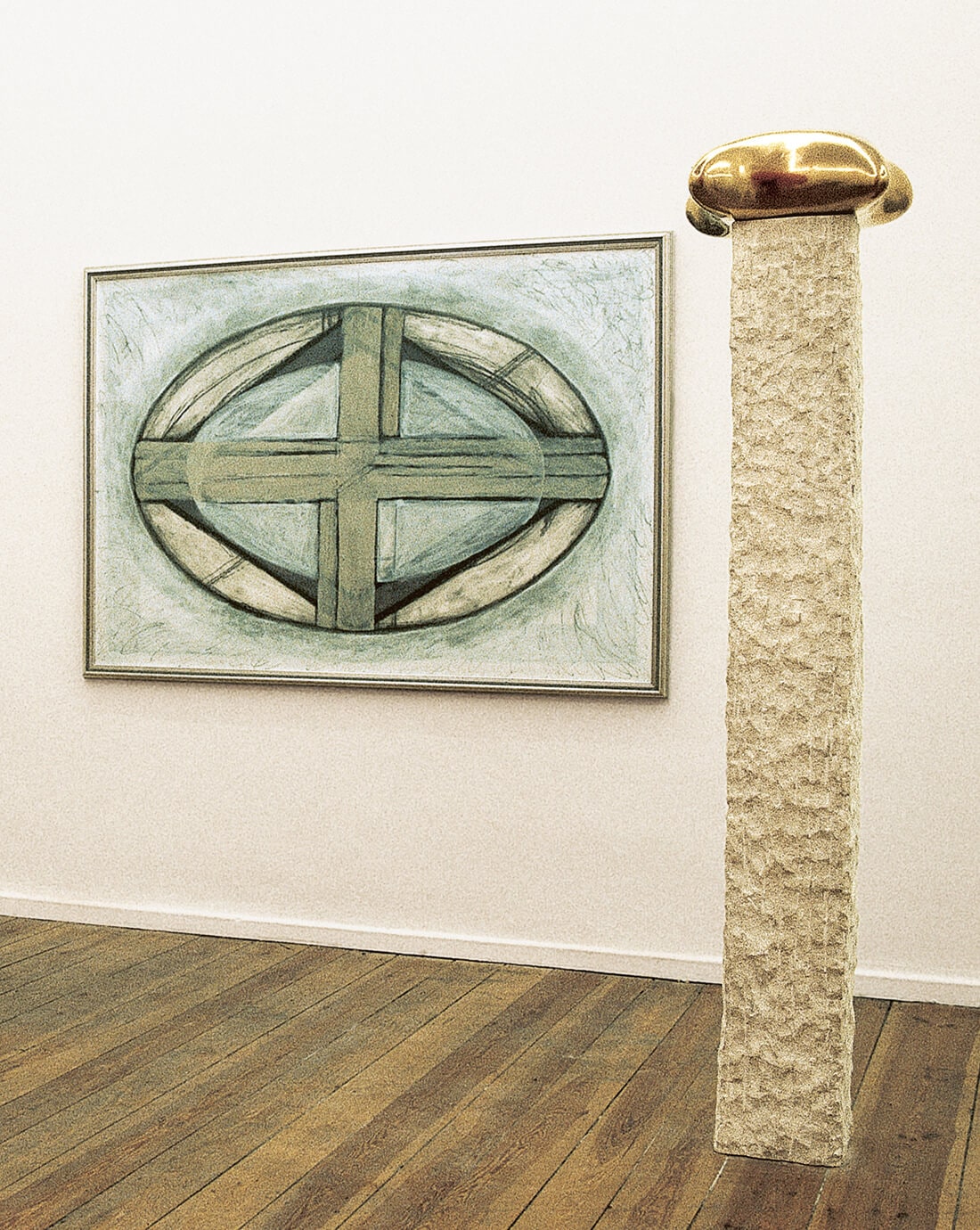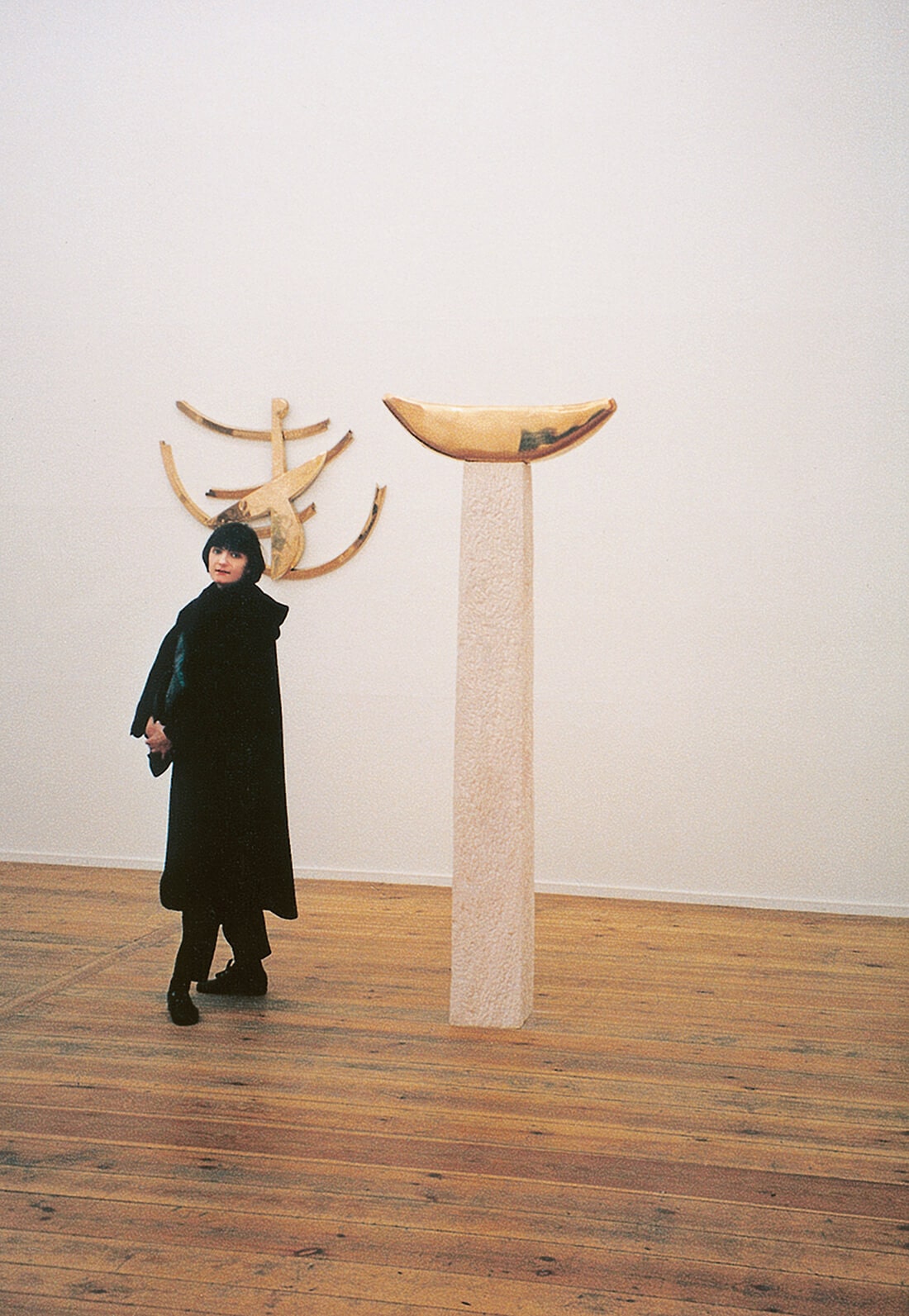
The foreword from the exhibition catalogue Künstlerhaus Bethanien, Berlin, 1990
Croat and European - Michael Haerdter
About ten years ago, at a joint friend’s in Berlin, I saw the first works of Peruško Bogdanić, of which I still have a lively recollection. They were gouaches, small in scale, boats on the water, floating in proper colours. With this kind of thinking, I am following a conservative interpretation, which in the case of Bogdanić may be misleading, for his boats contain formal elements of the most extraordinary simplicity. His pattern might be any little boat or the cocked hat people make out of paper on building sites. But the ambition of the little ships is not to depict the sailing of vessels. Collected together in flat structures, they are shown much more as symbols that inform us of a new order of things.
In the theory of art, there have been again and again attempts to examine and analyze the close connection between the living reality of a given time and society and artistic truth. Suppose I, too, submit to this trial, doing it in the case of one individual work. In that case, it will show us an artist who, working in society according to the official dictate of mimesis, provides an individual and perhaps subversive solution. In these early works, the young man from Hvar in the Croatian Adriatic has to convey his familiarity with the world in an almost abstract language of drawing. In it, the artist is free to develop his poiësis, as Aristotle would have put it, his artistic reality. I have to add here that many of the concepts that are used as arguments increasingly become “wavering forms”. In a reviving Europe, the borders of which to East and West have become more permeable, and where others again (as in the conflictive area of Yugoslavia) are re-closing: in this witches’ kitchen of the new European society, a simple debate of lived and of artistic reality is being called into question. Even the much-used concept of the autonomy of art in a space with no functions, as technology has placed and free-thinking, requires re-evaluation, where the consequence of this advance made in Europe in ravaged nature forces us to review the usual models of behavior. The only thing real is the necessity of change. The artist needs the courage to determine his place in this sea of uncertainty, in this fair of possibilities, and to resolve it with exactitude and self-confidence. Peruško Bogdanić also possesses some other qualities essential for this: a sure feeling for form, the mastery of the languages of both sculpture and painting, a capacity for ironical distancing, and an almost classical emotion for order. We can probably attribute this rare and precious ability to his Mediterranean inheritance. I shall call it Bogdanić’s courage to be simple. His self-portrait of 1987 eloquently reflects these advantages. From an unworked piece, the worked head sticks starkly upwards-above all, it expresses his principled news and orientation to his objective. The chin and edged Adam’s apple emerge from the mighty column of the neck and impart the power of will to the figure. The intellectual, emotional parts of the skull that starts up, which are also subtly rounded and modeled, oppose an expression of intellectuality and sensibility.
The artist skilfully emphasizes these essential features of the self-portrait with two vertical fissures on the dry ground. This work, from the “Heads” series, announces a further property: the look within. I do not know the artist’s intention when he left out the face. For an explanation, I shall use a sentence from Italo Calvino in his “Six memories for the next millennium”. The writer quotes, as an indication of his manner of work, his ideal of freedom, the myth of Perseus, who cuts off the head of Medusa with the help of the reflection of her figure on the bronze shield. Otherwise, a direct view of her would turn him into stone. Calvino says, “Perseus’ strength… inheres in the refusal to look directly and not in the rejection of the reality in which he is condemned to live.” I think this indirect view signifies the endeavor of our artist to bend the reality present to his will, visions, and the principle of order.
Peruško Bogdanić is on his path. He has a good way before him. He should continue with the consistency present in his work over the last ten or so years. From the time of the symbolism of the boats on his gouaches, Bogdanić continues with an economy of formal treatment and artistic sensibility. At the same time, he develops the independence of the drawn forms Raw paper Indd 179 that he has created. In the Berlin gouaches of 1988, the strictly indicated bodies and geometrical signals of a kind of cabbalistic semiotics show Bogdanić’s dominant sculptural talent. With a double sculpture, Venice of 1988, and the wooden sculpture Face of a Lost Battle made in 1989 in Scotland; the artist finally overcame the world of objects. They are signs and proofs of his research and mastery of free volume.
With this spiritual factor in space, the artist has left behind him what in his earlier works might have irritated him as either too timid or over-decorative. Let us go back to Europe. Croatia-following its historical gravitation-has once again turned towards Central Europe. The first European opening of the Zagreb Fine Art Salon in this year of 1990 is one of these signs. Peruško Bogdanić has contributed to this project. His artistic work expanded and intensified his previous links with Italy, Scotland, and Berlin. This is good and necessary. Europe needs spiritual exchange and dialogue that transcends national and regional borders. We need artists from this significant part to define itself anew: a new social reality will produce a contemporary, similar, or different aesthetic identity. We also need artists to preserve Europe’s spirituality and defend it against some future European mass culture. Peruško Bogdanić is one of those artists on whom we can depend. One that possesses an indirect view and does not resist the reality that he has been assigned by fate.



